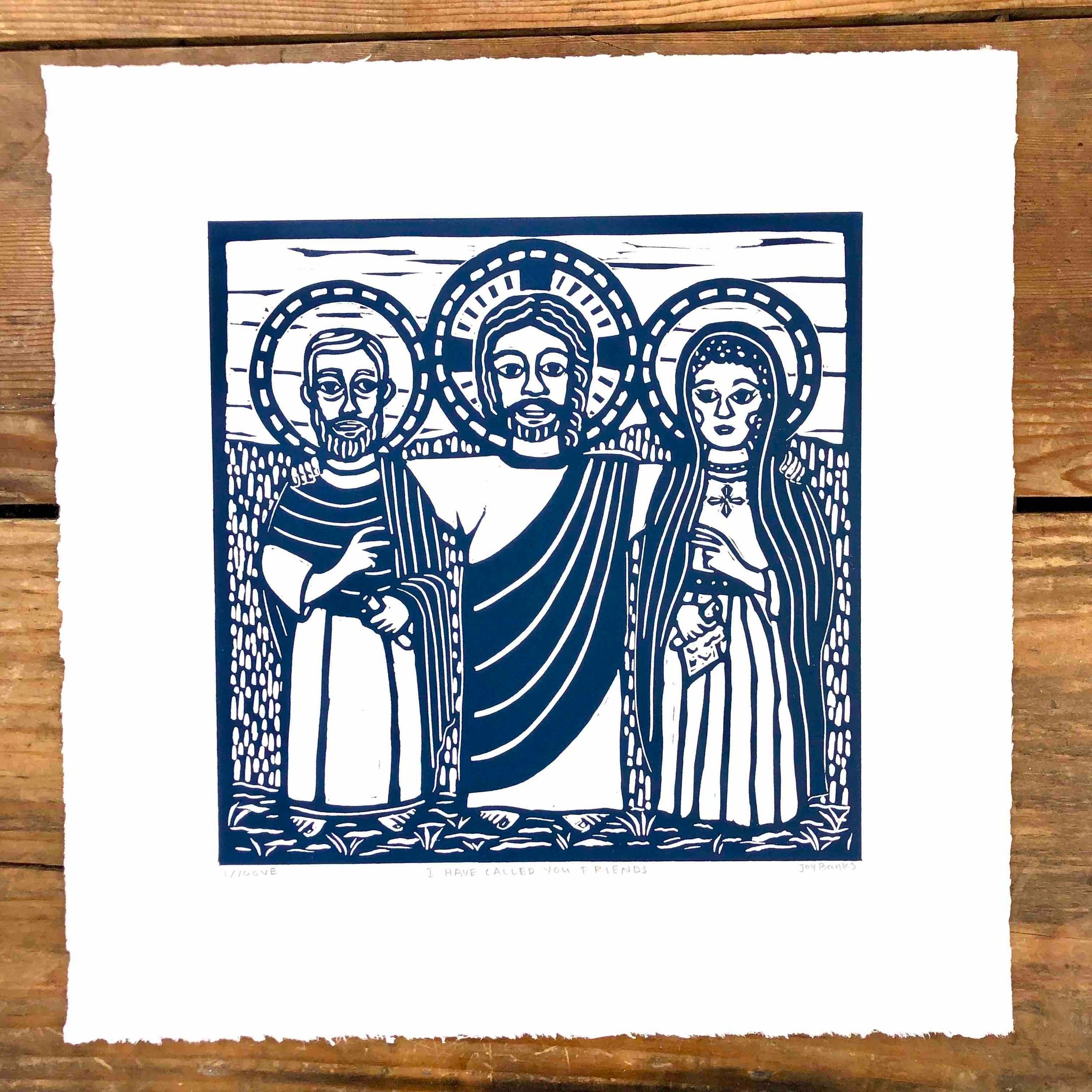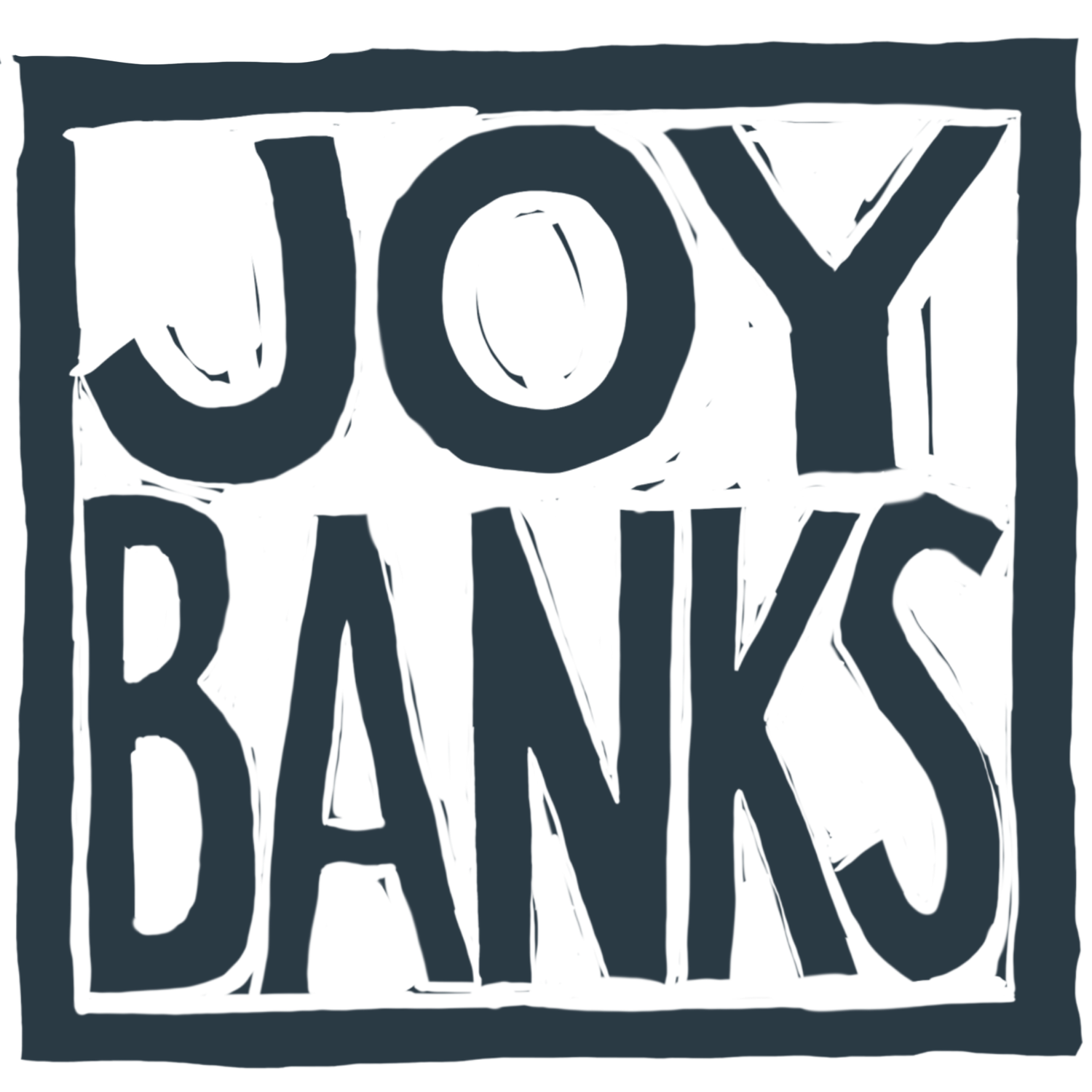 Image 1 of 3
Image 1 of 3

 Image 2 of 3
Image 2 of 3

 Image 3 of 3
Image 3 of 3




I Have Called You Friends
Original linocut print on archival Stonehenge white paper.
7 1/4” x 7 1/4” image on 11” x 11” paper
Limited edition of 100
This is my adaptation of the earliest known, 8th century, Coptic icon called “Christ and Abbot Mena” or “Christ and His Friend.” I have added a female friend into the image and made a few stylistic adaptations.
Abbot Mena was a 4th century desert father revered for his wisdom and spiritual insight. Researching similar female saints from the era, I have come to think of the female character in this reimagined icon as Amma Syncletica of Alexandria, a desert mother known for her wisdom and ascetic life-style in an age when empire had co-opted Christian expression.
Rather than simply an image about historical characters, however, this icon is a celebration of the profound and mystical companionship found with, and through, the One who said, “I have called you friends.” It is an invitation to contemplate the beauty and depth of friendship with and through divine love.
A few notes about the imagery in the piece (following from the original icon):
Why does Jesus have big hair? Good question. I don’t know, but have stuck to the hairdo from the original icon.
How do you know the central character is Jesus? In traditional iconography, the halo around Jesus’ head often includes a cross, unlike the halos of other saints.
What are the two friends carrying in their hands? They are carrying scrolls which symbolize that the figures in the icon are known for their teaching and wisdom.
What are they doing with their other hands? They are making the gesture of the blessing of Christ. Often in icons, the direction of this hand gesture points to the one who is Christ.
Why do their eyes look a little funny? In some icons from that era icons may have eyes that look in two different directions. In this case the figures are looking at the one who is in front of the icon (us) and the other eye is on Jesus.
Anything else? Yes, the Christ figure here is larger than the other characters, signifying his importance .
Original linocut print on archival Stonehenge white paper.
7 1/4” x 7 1/4” image on 11” x 11” paper
Limited edition of 100
This is my adaptation of the earliest known, 8th century, Coptic icon called “Christ and Abbot Mena” or “Christ and His Friend.” I have added a female friend into the image and made a few stylistic adaptations.
Abbot Mena was a 4th century desert father revered for his wisdom and spiritual insight. Researching similar female saints from the era, I have come to think of the female character in this reimagined icon as Amma Syncletica of Alexandria, a desert mother known for her wisdom and ascetic life-style in an age when empire had co-opted Christian expression.
Rather than simply an image about historical characters, however, this icon is a celebration of the profound and mystical companionship found with, and through, the One who said, “I have called you friends.” It is an invitation to contemplate the beauty and depth of friendship with and through divine love.
A few notes about the imagery in the piece (following from the original icon):
Why does Jesus have big hair? Good question. I don’t know, but have stuck to the hairdo from the original icon.
How do you know the central character is Jesus? In traditional iconography, the halo around Jesus’ head often includes a cross, unlike the halos of other saints.
What are the two friends carrying in their hands? They are carrying scrolls which symbolize that the figures in the icon are known for their teaching and wisdom.
What are they doing with their other hands? They are making the gesture of the blessing of Christ. Often in icons, the direction of this hand gesture points to the one who is Christ.
Why do their eyes look a little funny? In some icons from that era icons may have eyes that look in two different directions. In this case the figures are looking at the one who is in front of the icon (us) and the other eye is on Jesus.
Anything else? Yes, the Christ figure here is larger than the other characters, signifying his importance .
Each print is individually hand inked and pulled. Because of this, each print is unique and will have some slight variations to the photos shown. Please keep this in mind as you purchase.
